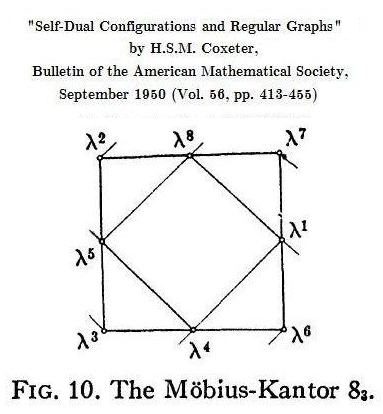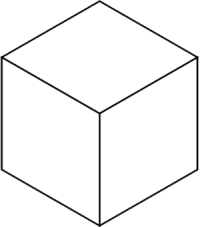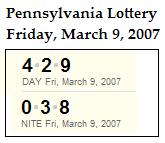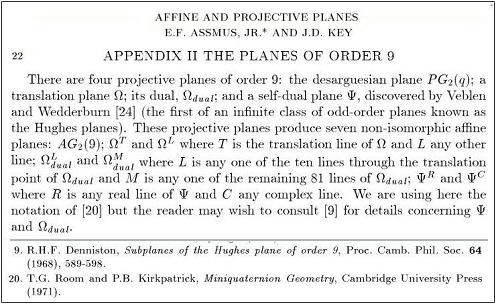Rosalind Krauss
in "Grids," 1979:
"If we open any tract– Plastic Art and Pure Plastic Art or The Non-Objective World , for instance– we will find that Mondrian and Malevich are not discussing canvas or pigment or graphite or any other form of matter. They are talking about Being or Mind or Spirit. From their point of view, the grid is a staircase to the Universal, and they are not interested in what happens below in the Concrete.
Or, to take a more up-to-date example…."
"He was looking at the nine engravings and at the circle,
checking strange correspondences between them."
– The Club Dumas ,1993
"And it's whispered that soon if we all call the tune
Then the piper will lead us to reason."
– Robert Plant ,1971
The nine engravings of The Club Dumas
(filmed as "The Ninth Gate") are perhaps more
an example of the concrete than of the universal.
An example of the universal*– or, according to Krauss,
a "staircase" to the universal– is the ninefold square:

"This is the garden of Apollo, the field of Reason…."
– John Outram, architect
For more on the field of reason, see
Log24, Oct. 9, 2006.
A reasonable set of "strange correspondences"
in the garden of Apollo has been provided by
Ezra Brown in a mathematical essay (pdf).
Unreason is, of course, more popular.
* The ninefold square is perhaps a "concrete universal" in the sense of Hegel:
"Two determinations found in all philosophy are the concretion of the Idea and the presence of the spirit in the same; my content must at the same time be something concrete, present. This concrete was termed Reason, and for it the more noble of those men contended with the greatest enthusiasm and warmth. Thought was raised like a standard among the nations, liberty of conviction and of conscience in me. They said to mankind, 'In this sign thou shalt conquer,' for they had before their eyes what had been done in the name of the cross alone, what had been made a matter of faith and law and religion– they saw how the sign of the cross had been degraded."
– Hegel, Lectures on the History of Philosophy ,
"Idea of a Concrete Universal Unity"
"For every kind of vampire,
there is a kind of cross."
– Thomas Pynchon


.jpg)
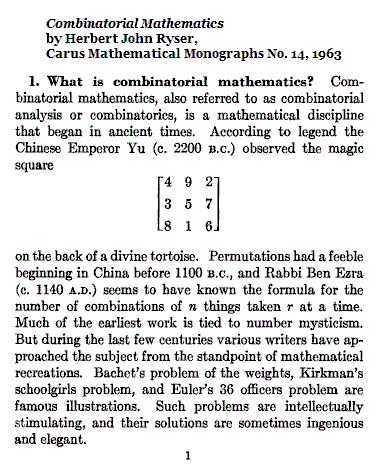




-actions-500w.jpg)
